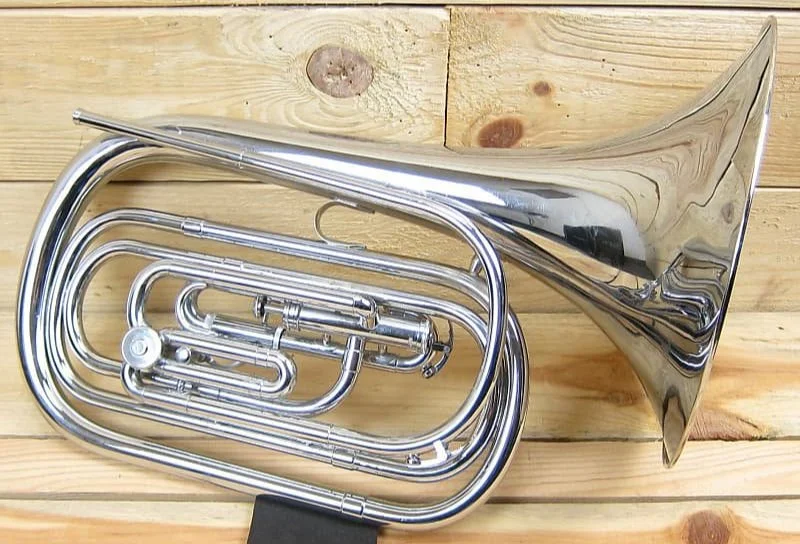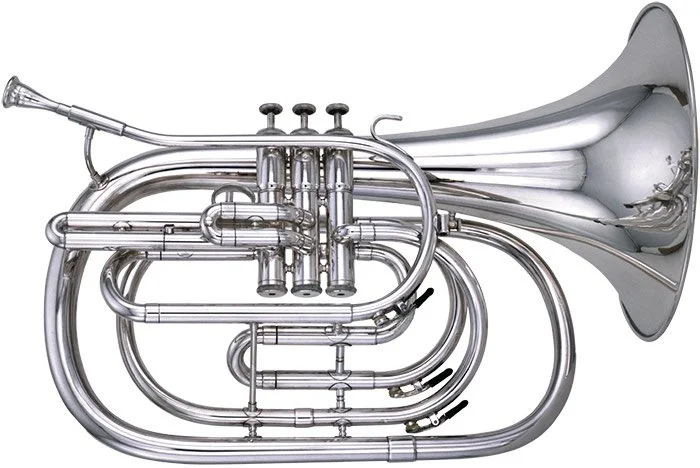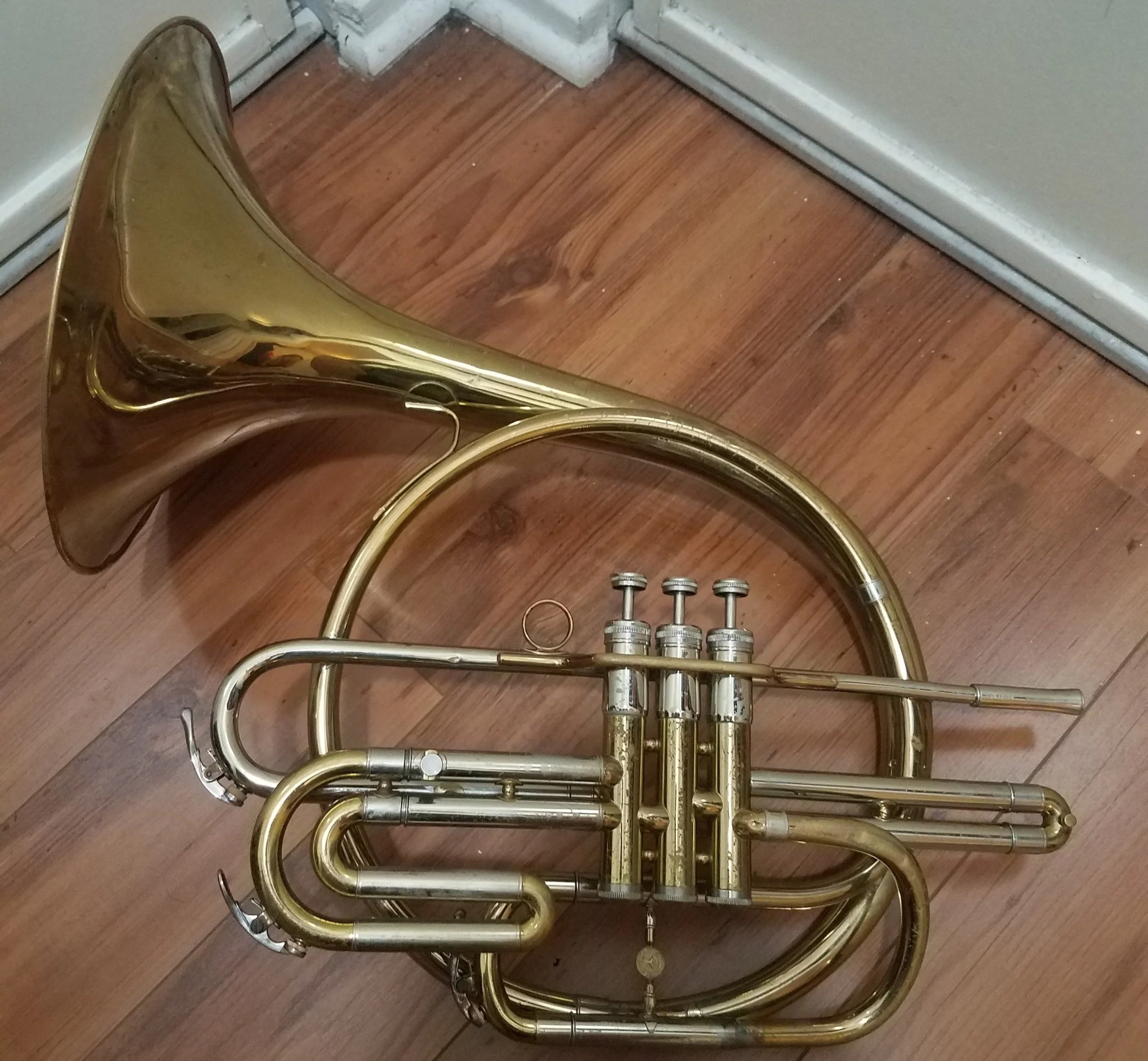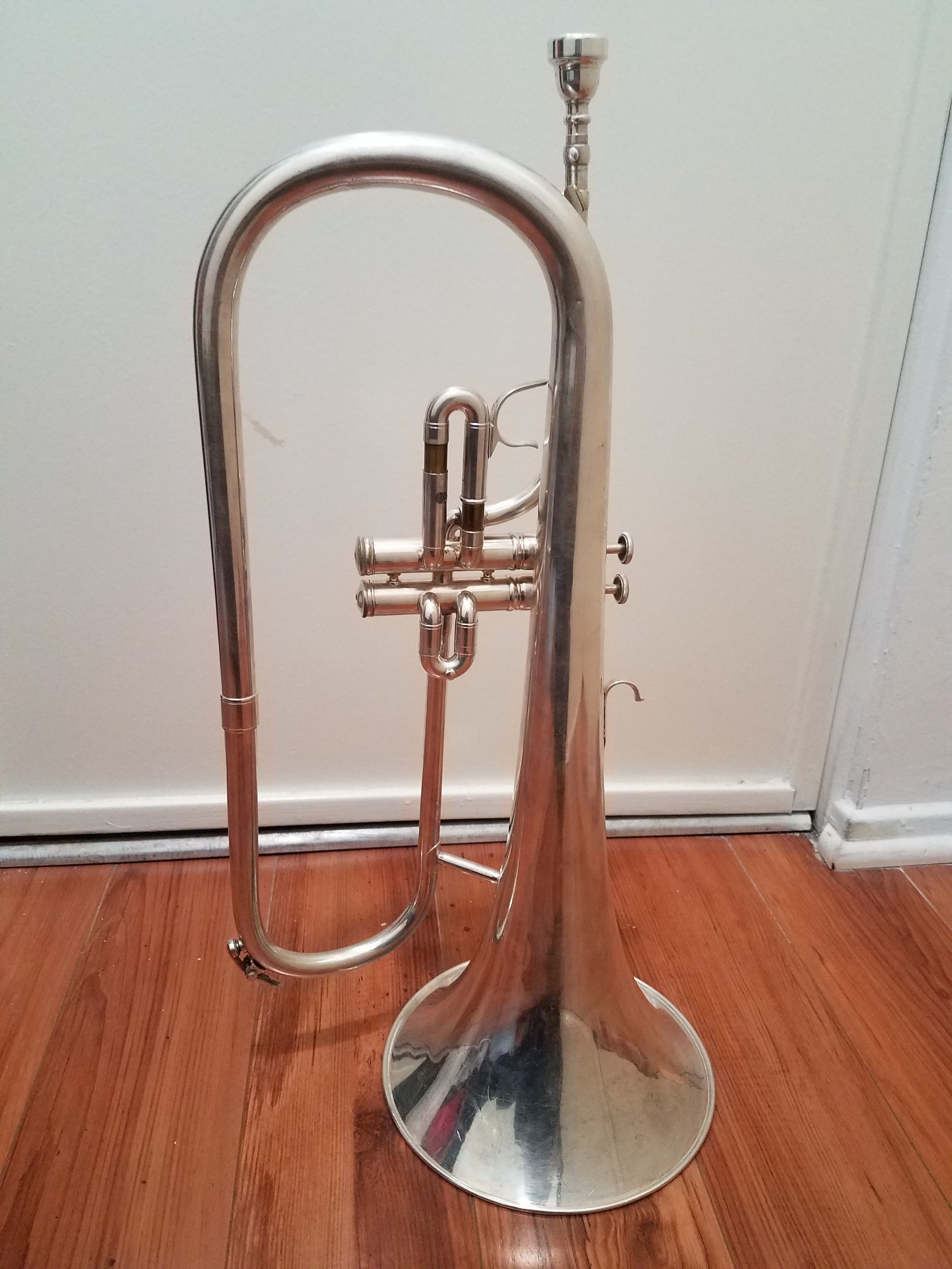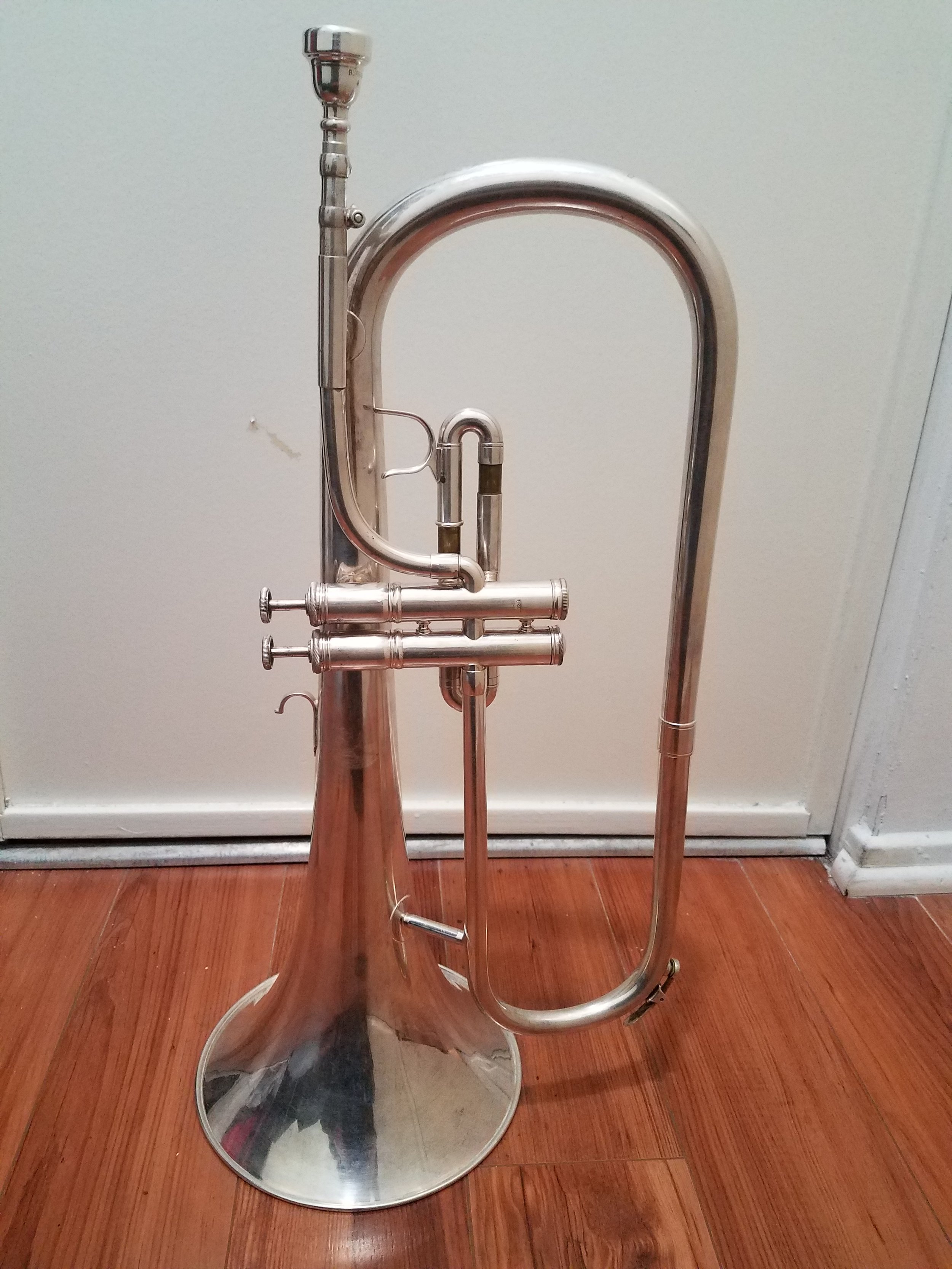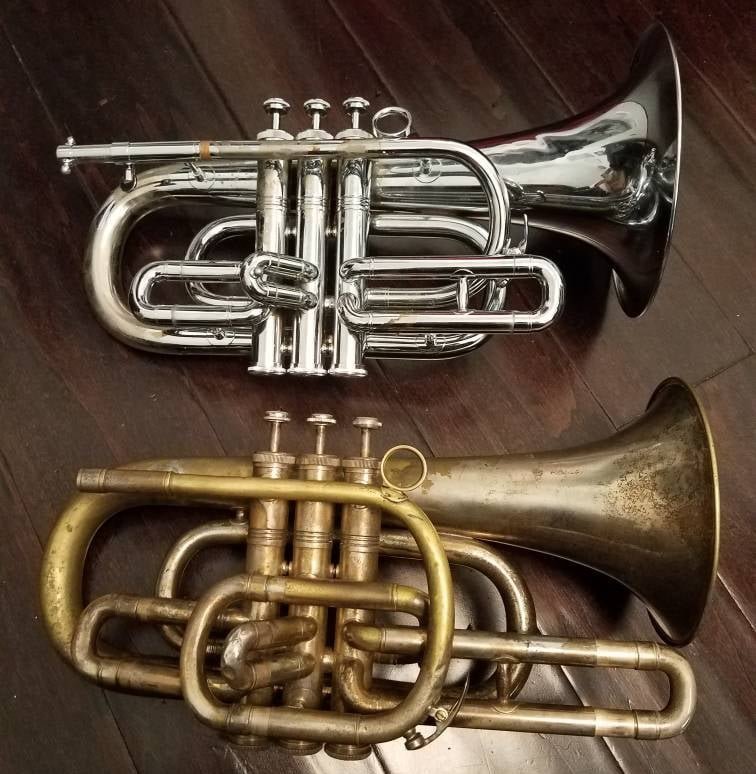The Lineage of the King 1120 Mellophone
The King 1120 is a marching mellophone that has been one of the most popular since its introduction. While the Yamaha YMP-204M is the current standard of the mellophone world, the 1120 still sees a lot of use in marching bands, most notably HBCUs. The current version of this model is the 1121, which has an angled leadpipe, re-wrapped 3rd valve slide, and other small changes.
But the 1120 was not designed in a vacuum. In fact, the design has direct ancestry back to the bad old days of the drum corps G bugle.
All three of these instruments have the same wrap, and all three were designed by the same person: Zig Kanstul.
The instrument on the left is the genesis of this mellophone design, the King K-50 mellophone bugle in G. This was the best of the 2-valve mellophones, and it is an absolute screamer.
When three valves were legalized in DCI in 1990, Zig Kanstul came back to the K-50’s basic design and updated it for the 3rd valve, but this time under his own brand. Pictured in the middle is an early pattern Kanstul KAB-175 alto bugle in G. Sadly I have never seen an early pattern KMB-180 mellophone bugle for sale, or else I would have used that in this photo comparison. But the KAB-175’s noticeably smaller bell diameter is the only difference between it and the KMB-180.
You’ll notice that the 175 deviated slightly from the K-50 design by having the leadpipe enter the 1st valve from the other side, rather than angling to get around the 1st valve slide and entering the valve from that side. The leadpipe is also shorter than the K-50’s, with that length moved to the taper after the valves. The two instruments do not play the same (impossible when adding a 3rd valve), but they do have a similar feel and great slotting all the way up into the highest register.
On the right in the pictures above is the King 1120. This was also designed for King by Zig Kanstul, after the Kanstul company had moved on to a different design for their mellophones and alto bugles. The older design clearly still had life left though, as Zig stuck very closely to the K-50/early Kanstul design. It is most similar to the K-50, sharing its longer leadpipe and leadpipe routing. But it also copies the 3rd valve design of the KMB-180/KAB-175, with that unmistakable 3rd valve slide wrap.
KAB-175 (top) and 1120 (bottom) 3rd valve slides
The King 1120, then, is essentially an updated version of both the K-50 and KMB-180 designs, lengthened to play in F. It plays great, as a Kanstul should.
P.S. As an interesting final note, the Yamaha line of marching mellophones was based on the preceding Olds marching mellophone wrap (which was stenciled by quite a few makers including Bach, Blessing, and Reynolds). The Olds marching mellophone was the first F marching mellophone, derived from the G mellophone bugle and designed by…you guessed it…Zig Kanstul!
So, the two mellophones that have dominated the marching arts for years are either an actual Zig design or a derivative of one. In fact, as the Jupiter mellophone is also essentially the same design as the Yamaha, the only current marching mellophone that isn’t a Kanstul derivative is the Adams MM-1, which bears a closer resemblance to the Dynasty mellophones.



